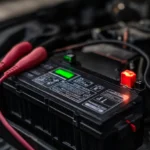A pristine paint job is nice, but used-car buyers obsess over one metric above all others: battery State of Health (SoH). Drop below 90 % and resale offers sink fast. The good news? You control most of the variables that erode capacity. Follow the eight habits below and your EV’s battery—and its future asking price—will thank you.
1 Stick to the 20-to-80 % charge window
Lithium-ion cells dislike extremes. Daily charging to 100 % or letting the pack sit near 0 % both accelerate anode-cathode wear. Most 2025 EVs let you set a “Maximum Daily Charge” or “Battery Care” slider—keep it around 80 % for routine driving and top off to 90-100 % only before long trips. LFP-equipped models can tolerate 90 %, but even they benefit from avoiding a constant 100 %.
2 Use scheduled charging to finish just before departure
Heat and high voltage together stress a battery. By timing your Level-2 or overnight slow charge to end at 06:30—right before the morning commute—you minimise the hours your pack sits near its peak voltage. Many 2025 cars integrate with smart-home apps, so letting “departure-ready” timers run is easy and practically free.
3 Pre-condition before every DC-fast-charge stop
Letting the car warm or cool its pack to the optimal temperature (around 20-30 °C for most chemistries) slashes internal resistance and shortens the time spent at brutal 200-kW currents. New OTA updates from Tesla, Hyundai-Kia, and GM automatically trigger pre-conditioning when you punch a charging stop into native nav—use it.
4 Park smart: shade in summer, garage in winter
High heat is public enemy #1. A 40 °C pack can degrade up to four times faster than one kept at 25 °C. Whenever possible, park under trees, solar canopies, or indoor garages in summer. In sub-zero weather, a mild 10 °C garage avoids deep-freeze capacity dips and saves energy on cabin-warm-up.
5 Keep software and BMS firmware up to date
2025 OTA roll-outs now include refined cell-balancing algorithms that smooth voltage imbalances and improve SoH reporting accuracy. Ignoring updates leaves efficiency on the table and can raise red flags in a buyer’s OBD or app-based battery report.
6 Limit high-power launches when the pack is cold or near full
Drag-mode sprints are fun, but full-tilt power at 90-100 % State of Charge spikes lithium plating risk. Likewise, hammering throttle on a near-empty, cold battery stresses the anode. Warm the pack with a 5-minute gentle drive or cabin pre-heat before unleashing peak torque.
7 Plan long-term storage around 60 % SoC and 15–20 °C
Leaving for a six-week trip? Park at roughly 60 % charge in a stable-temperature garage, then let the car’s battery-tender mode (or a smart trickle charger rated for EVs) maintain SoC. Avoid plugging into DC fast-chargers for storage—constant high-voltage trickle could do more harm than good.
8 Document your care routine for future buyers
Keep charging logs, service-center battery health reports, and screenshots of SoH readings. A prospective buyer—or dealer appraiser—who sees consistent 90 %+ health and proof of routine updates will pay a premium versus guessing blindly.
Bottom line
An EV’s battery is its largest single asset—and the easiest to protect. By mastering charge-window discipline, thermal common sense, and the latest OTA tools, you’ll keep degradation low, SoH high, and resale offers strong. Healthy battery, healthy wallet.









